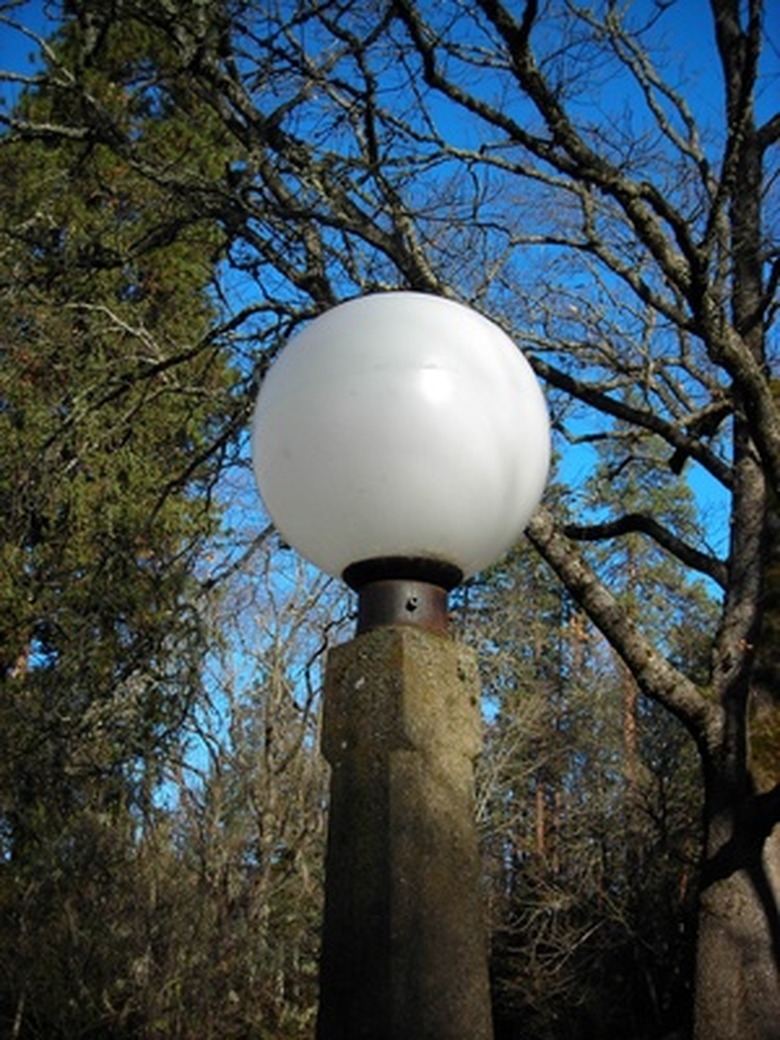Dremel Glass Polishing
Things Needed
-
Dremel buffing pads
-
100-grit to 140-grit diamond glass polishing compound
-
Drinking glass
-
Warm water
-
Cotton rags
-
270-grit to 300-grit diamond glass polishing compound
-
300-grit to 400-grit diamond glass polishing compound
-
Cerium oxide glass polishing compound
If you have a small glass project you want to polish like a glass bulb for a light fixture, you can use a buffing pad and a Dremel rotary tool. You can restore the finish of an antique glass fixture and preserve the valve of the light fixture by retaining the original glass globe. The multi-step grinding and polishing process will take some time to get a good-looking polish on the glass.
Step 1
Secure a buffing pad to your Dremel tool and wet the buffing pad with 100-grit to 140-grit diamond glass polishing compound. Buff the surface of the glass in small circular motions, overlapping each previous circle as you work your way across the glass surface to grind off imperfections. Add additional compound as the previous compound starts to dry. Use a speed setting between 1,000 rpm and 5,000 rpm.
Step 2
Stop buffing every couple of minutes, place the tip of the Dremel into a drinking glass and turn the Dremel onto its highest speed to remove buildup from the buffing pad. Continue steps one and two until you have buffed the entire surface of the glass once.
Step 3
Clean the glass surface with warm water and a cotton towel to remove the sanding compound residue from the surface of the glass.
Step 4
Change the buffing pad on your Dremel tool. Apply 270-grit to 300-grit diamond glass polishing compound to your buffing pad. Repeat steps one, two and three with the 270-grit to 300-grit compound. This is the second and last stage of grinding the glass. Use a speed setting between 1,000 rpm and 5,000 rpm on the Dremel. Continue buffing remaining imperfections until the entire glass surface feels smooth when you run your hand across it.
Step 5
Change the buffing pad on your Dremel tool. Apply 300-grit to 400-grit diamond glass polishing compound to your buffing pad to remove scratches left on the glass surface by the grinding process. Repeat steps one, two and three with this polishing compound. Use a speed setting between 1,000 rpm and 5,000 rpm. Continue buffing the glass until you can no longer see any large scratches in its surface.
Step 6
Change the buffing pad on your Dremel tool. Apply cerium oxide glass polishing compound to your buffing pad and repeat steps one, two and three to remove micro scratches and haze from the surface of the glass and restore a clear shiny luster to the surface. Use a speed setting between 1,000 rpm and 5,000 rpm. Buff the surface of the glass with this compound until you are satisfied with the clarity of the glass.
